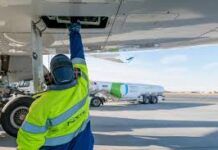The project that started the very light jet movement almost 30 years ago might be revived in a modern form. Millennium Aerospace earlier this year purchased the rights to manufacture the rakish little jet that Tony Fox predicted would revolutionize air travel when he introduced it in 1977. Although there are plenty of opinions about why the project never progressed beyond the mockup stage (it still hasn’t), Fox says it was just too far ahead of its time. His plan was to use modified cruise missile engines from Williams International (sound familiar?) but the federal government wasn’t keen on having the technology released to the public at that time and there were no suitable substitutes. Fox, now 85 and promoting his latest invention, talking garbage cans for fast food restaurants, said times have changed and the world is ready for his jet, even though he considers himself too old to take it the rest of the way. “I just want to see it take off,” he told AVweb last week at AOPA Expo. The new Foxjet will use Pratt & Whitney Canada PW615 series engines, similar to those in the Cessna Mustang. The company is predicting the six-place jet will cruise at 320 knots with a range of 1,215 nm and a stall speed of 74 knots. It will be a composite airplane with a full glass panel. Interiors are being designed by Porsche. Projected price is $1.7 million and first flight is planned for mid-2007, with certification in 2008.

































